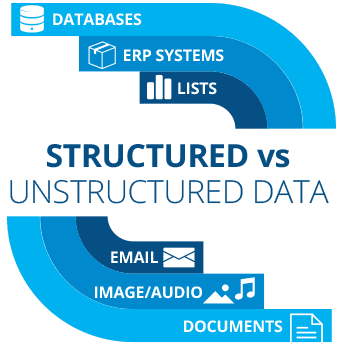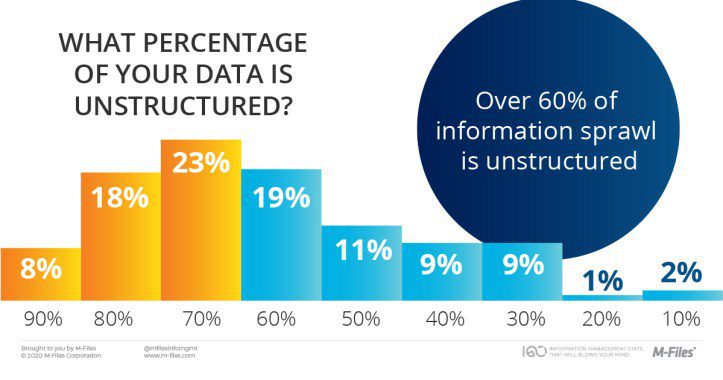What Is the Difference Between Structured and Unstructured Data?
You may be thinking, “Data is data.” However, not all data is the same. Structured data, also called quantitative data, is easy to analyze and organize. It includes things like customers, suppliers, and related transactional data like invoices, payments, etc. Structured data is typically stored in an application’s (ERP, CRM, HR, etc.) database and as a result, relationships are established between those data elements.
This type of information is easily understandable, already organized, and you know how to utilize it to benefit your business. It’s “obvious” data.
Unstructured data is different. Also known as qualitative data, this type of data isn’t as easy to organize and analyze. Yet it’s filled with vital information that can help you run and analyze your business. Unstructured data is found in documents, e-mails, media files (audio, video), text messages, and other non-database sources. This data is stored in a wide variety of places or silos, making it difficult to find and analyze when needed.
How to Manage Unstructured Data
The challenges associated with centralizing unstructured data make it tempting to just ignore it. But remember unstructured data accounts for 80% plus of all data in an organization so this would not be a smart move.
The good news is, you can leverage the power of M-Files to help manage and utilize this data! M-Files is an intelligent information management platform that makes unstructured data easily searchable and accessible across the organization, saving your team time in locating and using ALL the information necessary to serve your organization’s customers and other stakeholders.
Unstructured data in M-Files is organized through metadata tags. The tags enable users to quickly describe what something is when saving it—example: Sales Agreement for XYZ Corporation dated January 1. Tagging is simple for all users, mostly selecting from drop-down menus, and the number of required tags is highly configurable, including using your organization’s own unique terminology.
Access Information with Ease

If your employees can do a Google search, they can search the centrally collected metadata and find the important information they need. But that information is still secure because it can be classified based on who should have access, automatically excluding those who shouldn’t.
Instead of sorting through hundreds of emails or trying to remember where a specific audio file was saved, everything is organized, classified, and easy to search.
The unstructured data can be stored in the M-Files vault (repository) or other repositories where it is stored so it is quick and simple to access, even for those who work remotely or collaborate from different locations.
With M-Files, your team can securely access the correct information, instantly from anywhere.
Improve Business Performance
If you’re ready to improve your business performance by using all your available data more efficiently, you’re ready to take a closer look at intelligent information management. Learn how M-Files uses its Intelligent Metadata Layer to help you access and utilize the information you already have but didn’t know what to do with.
Check out Connecting Structured and Unstructured Data from M-Files and find out how to update how you manage your data. You can also schedule a demo to see how much more efficient M-Files can make your business.





